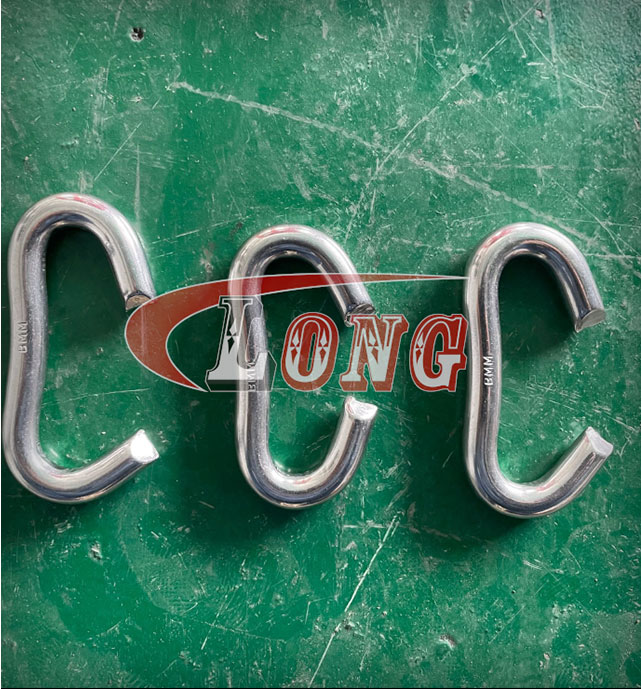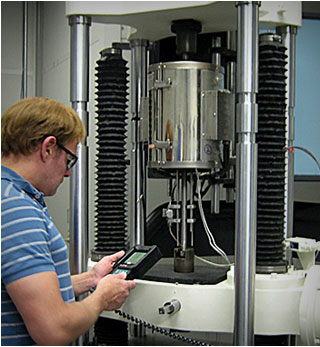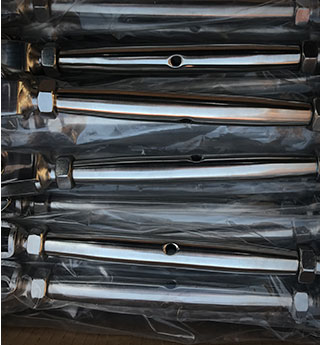





























































































































Whether it's simply moving furniture and boxes across town to a new house, or hauling goods and heavy equipment across the country, Ratchet Tie Down straps are an important part of completing any job safely.
The ratchet buckle is composed of a circular rotating gear, a pawl and a lever, which provides a simple method for tightening and fixing the load during transportation. Although the ratchet buckle provides better tension than other buckles, the ratchet buckle frame may come into contact with the side of the cargo or vehicle, causing damage to it during movement. In addition, it is easy to over-tighten the load with the ratchet buckle, which may cause further damage to the cargo and the cargo to which the cargo is anchored.
Common uses: fixing large furniture, construction materials and recreational vehicles.
Tie down straps are usually made using one of several different types of hooks. Tie-down hooks connect the straps to common anchor points on vehicles, trailers or other platforms to securely secure the cargo during transportation.
However, each tie-down hook is generally more suitable for certain applications. Therefore, when choosing a fastening hook, it is important to consider the cargo, the buckle and the platform on which the cargo is secured.
HERE'S A BRIEF OVERVIEW OF 5 COMMON TIE-DOWN HOOKS:
S-shaped hooks are the most commonly used fastening hooks, and they are usually paired with ratchet buckles. S-Hooks is a multi-purpose tie-down end that can be easily connected to vehicle bumpers, thin trailer angles, and various anchors and D-rings to secure various cargo. Therefore, S-Hook is very suitable for fixing:
Mountain bikes and off-road vehicles;
Furniture and moving boxes;
tray.
The S-shaped hook comes in several different sizes and can be made of cold-rolled or stainless steel. In addition, S-Hooks can provide galvanized or electrophoretic paint.
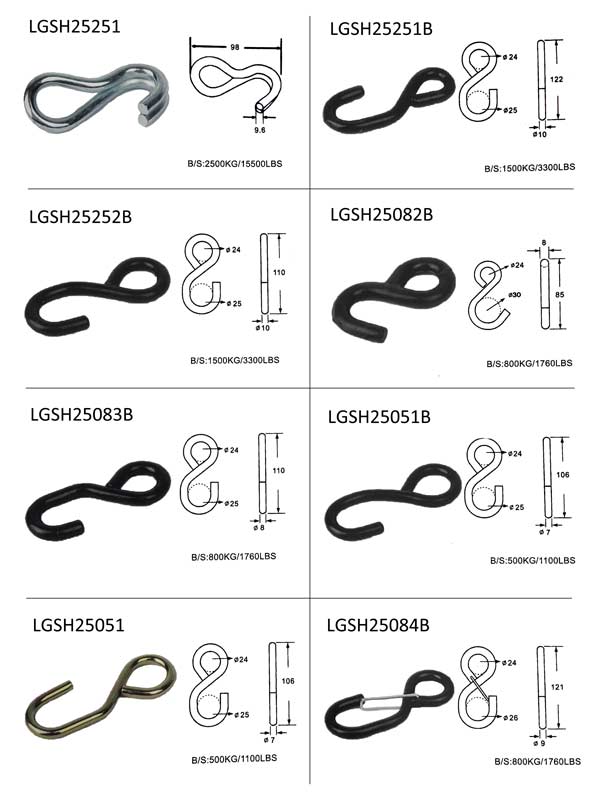
Although still considered to be a universal fastening end, double J-hooks or double-wire hooks are generally more suitable for securing heavier cargo than S-hooks.
Unlike the S-shaped hook, the double J-shaped hook is at a 90-degree angle to the belt plane and can be directly connected to the fixed point and the flat belt surface area across the cargo to prevent the belt from twisting. Therefore, the double J-shaped hook is more suitable for use with D-rings, O-rings and the side of the trailer to fix large or heavy objects, such as:
Motorcycles and sand tracks;
Canoes and kayaks;
Welder and medium toolbox.
Double J-Hooks are available in two-claw, single-claw and ''rotating'' variants. In addition, J-Hooks also provides galvanizing or electrophoretic paint.
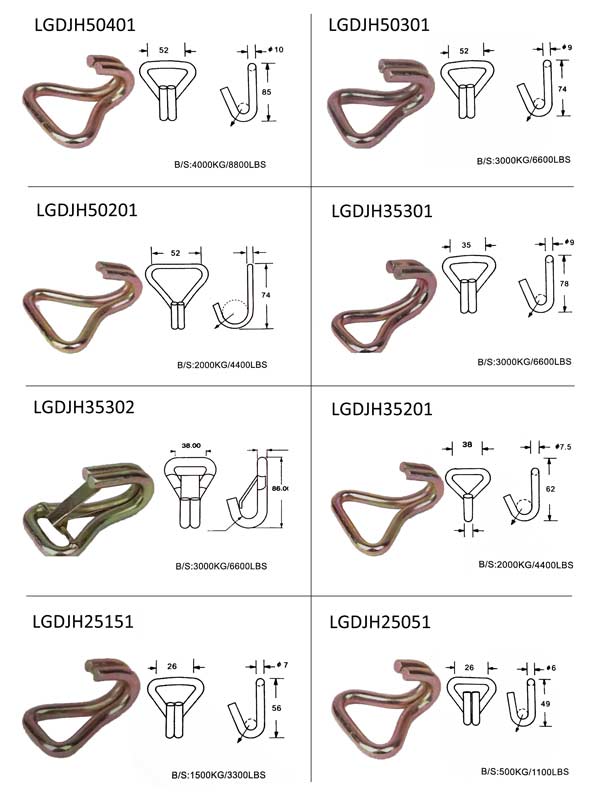
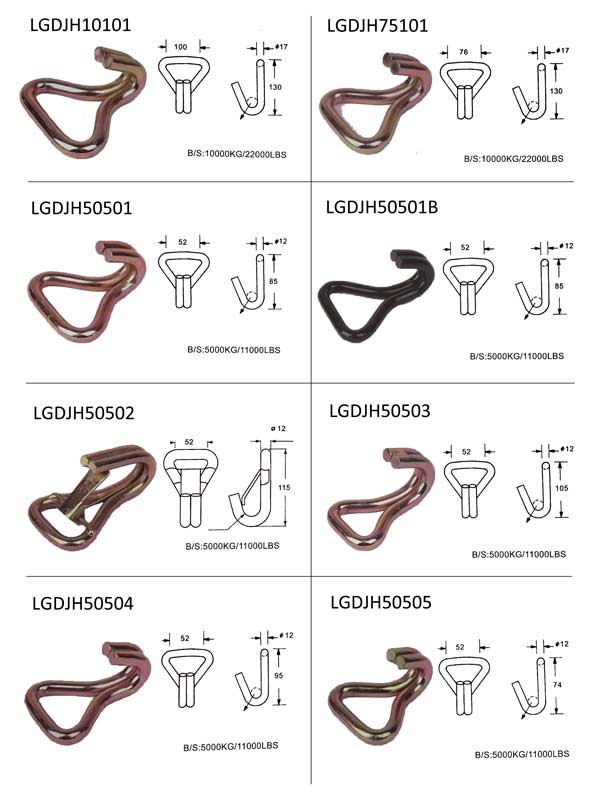
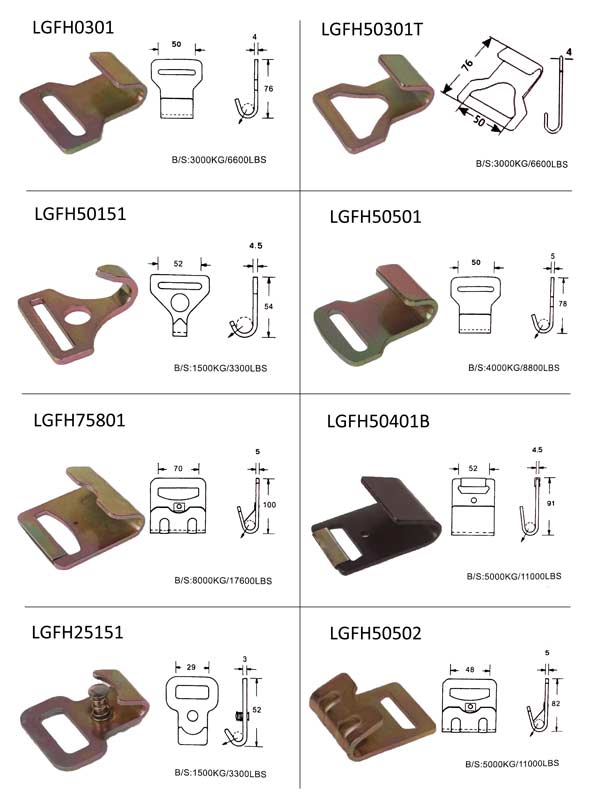
Flat hooks are often used in combination with winches or ratchet buckles on large flatbed trailers to secure heavy and industrial goods. The flat hook is made of a flat square steel bent backward. This design allows the flat hook to be fixed to a thin, flat anchor point, such as the side of a flatbed trailer or pile bag. During transportation, it is best to use flat hooks to fix:
Backhoes and excavators;
Industrial generators and engines;
Guardrails and steel support beams.
Flat hooks are usually galvanized.
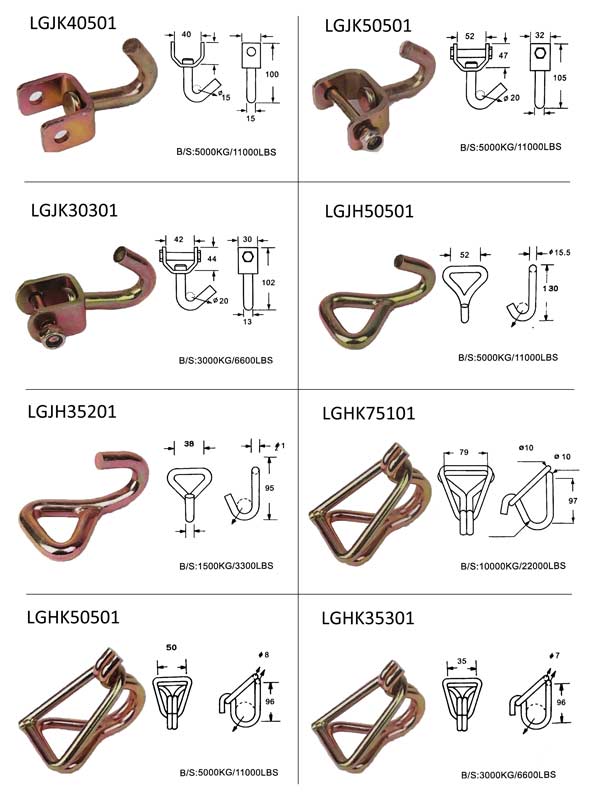

STEP 1
To thread ratchet tie down, Pass the webbing through the slot and place it on the central rotating spool of the closed ratchet.

STEP 2
Pull the webbing over, leaving some slack.

STEP 3
Turn the ratchet, that is, raise and lower the handle.

STEP 4
The webbing will wind on itself and lock in place so that further ratchets will quickly increase the tension of the strap.

STEP 1
To release the webbing, pull the release tab on the top assembly to cover the ratchet function.

STEP 2
Open the ratchet until the two components are in line and the top component snaps into the pawl.

STEP 3
Grasp the webbing from the non-fixed side and pull to release the webbing.









